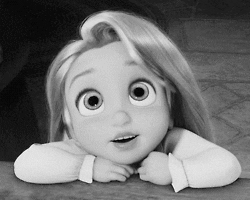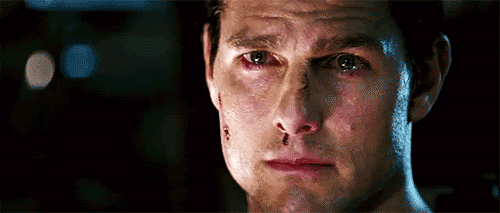FACS
Animating the Face
. Getting into Animation .
When it comes to animating a realistic face, you will/should be animating with a reference to achieve 100% realism. So, given the same reference and the same rigs to animate, there can be no two results. Meaning that whoever animates with precision, the face should look the same (ideally).
Its important to note that there is no “my take/expression”. We are neither inventing or imagining the performance in our minds and creating on the screen like it may happen in CG/Character Animation. In realistic facial animation, we just reproduce/recreate the actor’s performance on to the puppet one-to-one unless specifically asked to improvise. So essentially, we should call it “Facial Performance Capture (FPC) !”
To start, first play the footage a few times and study what is happening. Like with any animation shot, try to understand what is the story behind that moment, what is going to happen later, the character, context etc.. Try it in front of the mirror to see how the shapes are formed. If there is speaking or singing, don’t just make the sound but do it with the same emotion dominant in the background and that’s when you will see & feel the actual poses on your face which tell the story
As animation tech evolves, the approaches towards creating these can change. While there are serveral ways to approach animating realistic performances, I am sharing with you an overview of a fool-proof method layered in 3 stages.
. Stage 1 – Eyes & Jaw .
EYES

Getting the eyes working perfectly is the first and the most important task of all. It is quite easy and straight forawrd to get the eye darts and blinks working almost accurately (atleast 90% of it) and right from the beginning, you will start to see the soul in the performance.
A small tip here is to place the eye target in the world space so that you get the skin around the eyes deforming they stick and move from target to target and try to place it at a distance physically accurate so that you get the right convergence between the eye balls.
Moreover, due to the nature of the anatomy around the eyes, they don’t really affect the rest of the face or the mouth shapes (talking in the context of animation for our purpose) which makes it safe to animate at the very beginning.
JAWS
Getting the jaw right is the most crucial in a given performance to get accurate results.
Try moving only your jaw without using any of the facial muscles like we normally do for an expression and you can see a significant change on the skin. This is because the facial muscles (flexible) are connected to the jaw (solid bone) and therefore any movement on the jaw can affect the muscles and skin but not the other way round.
Banking on facts like this, we need to create a list of indicatives as to what is the actual jaw movement (kind of like developing an x-ray vision!)
- The movement of the chin is most often confused with that of the jaw (you can slide the chin up & down without moving the jaw!)
- Merely noticing the lips touching doesn’t always mean that the jaw is completely closed (you can force the lips to stick even without the upper and lower teeth in contact with each other)
- The jaw along with the opening action, can also thrust back & forth and move sideways which can be missed easily. So, pay special attention to under-bites, over-bites and clenching actions of the jaw.
_ Relevant examples _
To summarize, the trick is to know how much of the skin is moved by the jaw and how much by the expression so that you can dial the correct values on the facial controls later and remember to completely animate the jaw with the best possible detail and not just blocking it.
” if you don’t pay attention to the jaw, it will bite you back !! ” so please be careful.
. Stage 2 – Key Poses .
STORY KEYS
Once you have a decent jaw pass, the next step is to capture the poses and events happening on the face which are significant in conveying the story and emotion.
As you have studied the performance keenly, spot those one or two major key poses which displays the overall emotion for the shot and :
- Try the same emotion on your face
- Look at the mirror to see and feel where are the forces acting
- Recollect what are those actions called out in the FACS chart
- Simply dial those channels on the facial controls and play with the values
By this point you will start seeing the face slowly come to life as you have the eyes, the jaw and the major emotion down which establish the story.
EXTREMES
From now, you can look at the face in two parts – below the eyes (for the mouth region) and above the eyes (for the brows region). Both of these can have their own set of keys as you can observe that they are independent in how they move and don’t necessarily affect each other. So, find all those key poses that denote major points of change like :
- An expression change from one extreme to another
- Extremes of mouth shapes happening while making sounds etc.
Remember to set a key on all the facial controls on your chosen key-frames even if you didn’t dial a particular channel. The values on all the channels for all the keys should be set by you consciously looking at the reference and making a judgment on what is happening and not by the computer because of the default interpolation of the curves in the graph editor.
. Stage 3 – Breakdowns .
TIMING
By now, you made sure that all the major elements in establishing and creating bits of life are captured. Next is to connect all of these Gems to craft a beautiful piece of jewelry. Pay attention to how each of the channels you dialed are transitioning from key to key in terms of :
- How long they are held for
- How sharp or smooth are the ease-out and ease-in etc.
NUANCES

Now for the icing on top of the cake. By now the actors in the footage may be singing to you daily in your dreams and its the same old face you have been looking at for weeks on end thinking whe was this universe created where its the same face you see everywhere including your own !! Well before we extrapolate on that madness, just hang on a bit more as its almost there.. now it is the time to finesse it all and call it done.
Take a break, meditate and come back to have a look at the performance with fresh eyes and catch those minute nuances that you never notice or that got ignored like :
- Those one frame changes happening when starting from an extreme which denotes the firing of muscles
- Those twitches which don’t account for in the key frames
- Any texture in the transitions needed
- Dilating the pupils of the eyes
- That final layer of noisy motion which adds a natural touch to the face and makes it feel organic
And folks, that’s how you will virtually create a realistic human face with life.